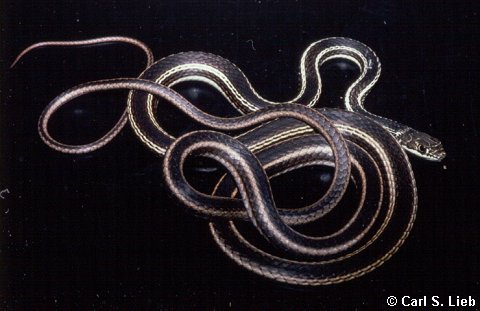

Shapes and color patterns of animals can serve them well. We all know about camouflage, where an individual blends in with its background so well that it is easily overlooked. We also may know about warning coloration, where an animal is conspicuous, but by this feature warns predators that it is not to be trifled with. The startling red of velvet ants or the black and white stripes of skunks say beware!
But concealment and advertisement of danger are not the only functions of color and pattern. Courtships of many birds, reptiles, and fish rely on color displays, and we all recognize the importance of colorful clothing and artful makeup in human interrelationships.
Manufacturers of cars and sporting goods have long used stripes or
other patterns to give the illusion of speed. But some animals use stripes to achieve
just the opposite--to give the impression of slowness. Many a raptorial bird has ended
up with a fistful of dirt, striking behind a fast-moving, striped snake whose pattern
allowed it to lie about its speed.

Contributor: Arthur H. Harris, Laboratory for Environmental Biology, Centennial Museum, University of Texas at El Paso.
Desert Diary is a joint production of the Centennial Museum and KTEP National Public Radio at the University of Texas at El Paso.

A Striped Whipsnake (Masticophis taeniatus). The stripes make it difficult to judge the speed of a rapidly moving snake by giving no point of reference that can easily be followed by the eye. Photograph by Carl S. Lieb.
Ernst, C. H., and R. W. Barbour. 1989. Snakes of Eastern North America. George Mason University Press, Fairfax.